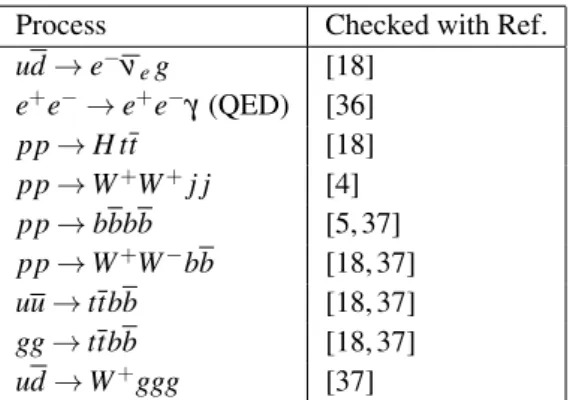PoS(EPS-HEP2011)373
Golem/Samurai
G. Cullen 1 , N. Greiner 2,3 , G. Heinrich 2 , G. Luisoni 4 , P. Mastrolia 2 , G. Ossola ∗,5,6 , T. Reiter 2 , F. Tramontano 7
1 School of Physics and Astronomy, The University of Edinburgh, Edinburgh EH9 3JZ, UK
2 Max-Planck Insitut für Physik, Föhringer Ring, 6, D-80805 München, Germany
3 Department of Physics, University of Illinois at Urbana-Champaign, 1110 W Green Street, Urbana IL 61801, USA
4 IPPP, University of Durham, Durham DH1 3LE, UK
5 Physics Department, New York City College of Technology, City University of New York, 300 Jay Street, Brooklyn NY 11201, USA
6 The Graduate School and University Center, The City University of New York 365 Fifth Avenue, New York NY 10016, USA
7 Theory Group, Physics Department, CERN, 1211 Geneva 23, Switzerland
After a brief review of the various approaches available for the automated computation of multi- particle scattering amplitudes at the one-loop level, in this presentation we describe the main features of the G O S AM (Golem/Samurai) framework. The G O S AM approach combines a d- dimensional extension of the integrand-level reduction method and improved tensorial techniques, with an automated generation of amplitudes via Feynman diagrams. G O S AM can be used to gen- erate and evaluate one-loop corrections in both QCD and electro-weak theory, and offers the flexibility to link general model files for theories Beyond the Standard Model. The discussion will be accompanied with examples of applications.
The 2011 Europhysics Conference on High Energy Physics-HEP 2011, July 21-27, 2011
Grenoble, Rhône-Alpes France
∗
